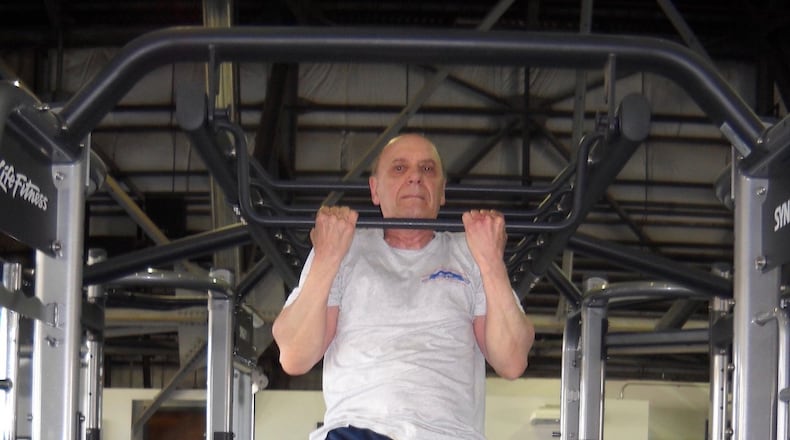To do a Pull Up, grasp a Pull Up bar with an overhand grip rather than the palms facing you. To reduce stress to the shoulders, pull the shoulder blades slightly down and back. Maintain this position and in a slow and controlled manner, pull your body upward through your fullest range of motion. Pause, and then slowly return to the starting position. Repetitions will vary according to strength capabilities.
Although many exercisers attempt to do Pull Ups and Chin Ups, very few are able to do so with good form. The two most common mistakes are using excess momentum/speed to pull up, and failing to go through a full range of motion. To build strength to eventually do the exercises, these are good options:
Assisted Pull Up/Chin Up: If your gym has one, this machine is a great way to practice form and build strength. Standing or kneeling on a platform, the resistance you choose allows you to pull yourself up using a percentage of your body weight.
Lat Pulldown: With this exercise, you are seated and pull the bar toward the collarbone. As with the Assisted Pullup, this is a weight-loaded machine, so the resistance level can be adjusted as you get stronger. Both the Assisted Pull up/Chin Up and the Lat Pulldown allow you to vary your hand position.
TIPS:
- Allow some slack at the elbow joint when doing exercises that involve working arm muscles. Locking out the joints or overstretching can create needless strain and could lead to injury.
- If you have a training partner, he or she can give you some assistance as you pull yourself up.
- When exercising, engage the abdominals and low back and keep the head aligned with the spine to help maintain proper posture. Swinging of the body during a Pull Up can occur if the abdominals/low back lack sufficient strength and control.
- If you have existing joint problems, especially with the shoulder or elbow, seek advice from your physician or qualified fitness professional before attempting.
About the Author
